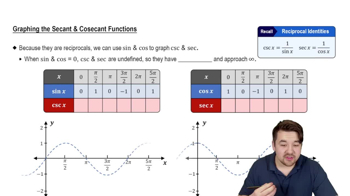75. Exploring powers of sine and cosine
e. Repeat parts (a), (b), and (c) with sin²x replaced by sin⁴x. Comment on your observations.
 Verified step by step guidance
Verified step by step guidance Verified video answer for a similar problem:
Verified video answer for a similar problem:



 5:43m
5:43mMaster Definition of the Definite Integral with a bite sized video explanation from Patrick
Start learning